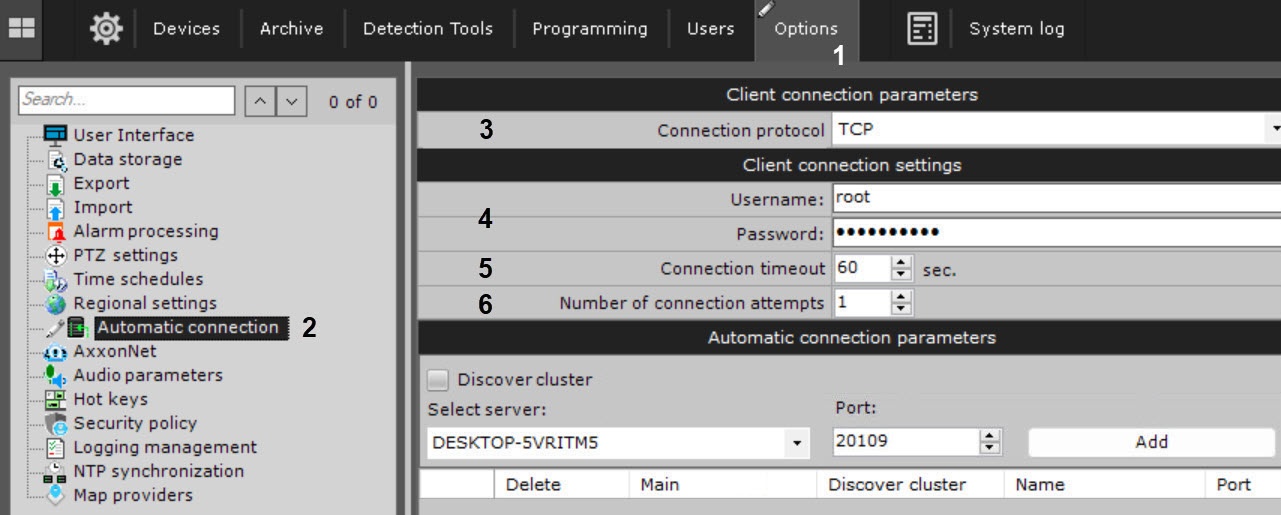Go to Settings → Options → Automatic connection (1-2).

Configuring the protocol used by Clients to connect to the Server allows prioritizing reliability or speed of data transmission (3). The connection protocol is set individually for each Server in an Axxon domain. All Clients connected to the Server will receive video streams over the selected protocol.
Descriptions and recommendations for selecting a protocol are given in the table.
| Protocol | Description |
|---|---|
| TCP | This protocol is more reliable but bandwidth-intensive. Recommended for Servers with small numbers of cameras |
| UDP unicast | UDP is typically faster but less reliable for data transmission. Unicast involves data transmission to a single recipient. This protocol is best for Servers with many cameras connected to a single Client. |
| UDP multicast | Multicast refers to data transmission to a group of recipients. This protocol is designed for Servers with many cameras connected to multiple Clients. Important! This protocol has to be supported by all network components, in particular, switches. |
Specify the Connection timeout parameter (5), which determines how long one must wait for a successful connection before considering the attempt to be unsuccessful. The default timeout value is 60 seconds, the maximum value is 5 minutes. When using this setting, automatic connection will attempt to connect immediately. If the connection fails, the Server will wait for a user-specified period of time (timeout) and retry the connection.
- select the Server in the list (7);
indicate the port for connecting to the Server (8).
If the Port field is left blank, the standard port (20111) will be used for connecting.
Click the Add button (9).
It is possible to connect to only one Server on an Axxon domain. So when a Server is added to the list, all other Servers on the Axxon domain become unavailable for selection.
To remove a Server from the list, click the
 button.
button.
When connecting, the Client will use the parameters (maps, layouts, user rights) of the main Axxon domain.
To select a main Axxon domain, select the check box in the relevant column of a Server that is on the Axxon domain (10).


